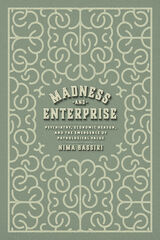82 start with D start with D
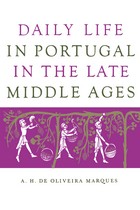
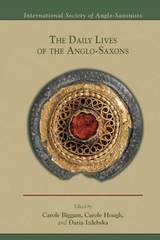
Insights into the lives of any group of historical people are provided by three main types of evidence: their language, their literature and their material culture. The contributors to this volume draw on all three types of evidence in order to present new research into the lives of the Anglo-Saxons. The particular focus is on daily life – the ordinary rather than the extraordinary, the normal rather than the exceptional. Rather than attempting an overview, the essays address individual scenarios in greater depth, but with an emphasis on shared experience.
The following scholars have contributed essays to this collection:
Martha Bayless
University of Oregon
Carole P. Biggam
University of Glasgow
Paul Cavill
University of Nottingham
Amy W. Clark
University of California, Berkeley
James Graham-Campbell
University College London
Antonina Harbus
Macquarie University, Sydney
Carole Hough
University of Glasgow
Daria Izdebska
Liverpool Hope University
Karen Louise Jolly
University of Hawai‘i at Mānoa
Alexandra Lester-Makin
University of Manchester
Elisabeth Okasha
University College, Cork
Phyllis Portnoy
University of Manitoba
Jane Roberts
University of London
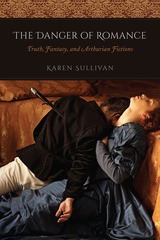
Yet is it possible that romance is expressing a truth—and a truth unrecognized by realist genres? The Arthurian literature of the Middle Ages, Karen Sullivan argues, consistently ventriloquizes in its pages the criticisms that were being made of romance at the time, and implicitly defends itself against those criticisms. The Danger of Romance shows that the conviction that ordinary reality is the only reality is itself an assumption, and one that can blind those who hold it to the extraordinary phenomena that exist around them. It demonstrates that that which is rare, ephemeral, and inexplicable is no less real than that which is commonplace, long-lasting, and easily accounted for. If romance continues to appeal to audiences today, whether in its Arthurian prototype or in its more recent incarnations, it is because it confirms the perception—or even the hope—of a beauty and truth in the world that realist genres deny.

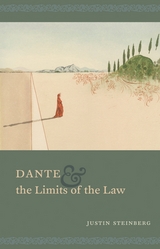
Examining how Dante probes the limits of the law in this juridical otherworld, Steinberg argues that exceptions were vital to the medieval legal order and that Dante’s otherworld represents an ideal “system of exception.” In the real world, Dante saw this system as increasingly threatened by the dual crises of church and empire: the abuses and overreaching of the popes and the absence of an effective Holy Roman Emperor. Steinberg shows that Dante’s imagination of the afterlife seeks to address this gap between the universal validity of Roman law and the lack of a sovereign power to enforce it. Exploring the institutional role of disgrace, the entwined phenomena of judicial discretion and artistic freedom, medieval ideas about privilege and immunity, and the place of judgment in the poem, this cogently argued book brings to life Dante’s sense of justice.
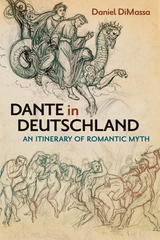
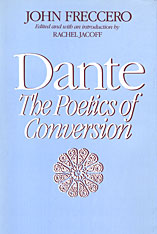
John Freccero enables us to see the Divine Comedy for the bold, poetic experiment that it is. Too many critics have domesticated Dante by separating his theology from his poetics. Freccero argues that to fail to see the convergence of the letter and the spirit, the pilgrim and the poet, is to fail to understand Dante’s poetics of conversion. For Dante, body and soul go together and there is no salvation that’s purely intellectual, no poetry that is simply literary.
The essays that form this book were originally published between 1959 and 1984. They are arranged to follow the order of the Comedy, and they form the perfect companion for a reader of the poem. With these essays assembled for the first time, we can now see Freccero’s stature: he is the best contemporary critic of Dante. Freccero is that rare article, a critic of eclectic and not dogmatic persuasion. Throughout Freccero operates on the fundamental premise that there is always an intricate and crucial dialectic at work between Dante the poet and Dante the pilgrim, and that it is this dialectic that makes the work so profoundly dramatic, one of the great novels of the self.
Thanks to Freccero we readers have the Comedy whole again. Freccero calls upon medieval philosophy, cosmology, science, theology, and poetics to enable us to traverse Dante’s moral landscape without losing our way in the confusions of minute exegeses. In a secular age Freccero enables us to see this poem as what it is, something wholly other than what we might believe or write. In doing so he shows us the most that language can achieve in any age, secular or not.
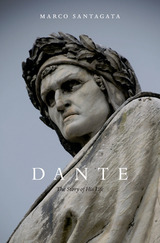
A Times Literary Supplement Book of the Year
A Marginal Revolution Best Non-Fiction Book of the Year
A Seminary Co-op Notable Book of the Year
A Times Higher Education Book of the Week
A Choice Outstanding Academic Title of the Year
Marco Santagata’s Dante: The Story of His Life illuminates one of the world’s supreme poets from many angles—writer, philosopher, father, courtier, political partisan. Santagata brings together a vast body of Italian scholarship on Dante’s medieval world, untangles a complex web of family and political relationships for English readers, and shows how the composition of the Commedia was influenced by local and regional politics.
“Reading Marco Santagata’s fascinating new biography, the reader is soon forced to acknowledge that one of the cornerstones of Western literature [The Divine Comedy], a poem considered sublime and universal, is the product of vicious factionalism and packed with local scandal.”
—Tim Parks, London Review of Books
“This is a wonderful book. Even if you have not read Dante you will be gripped by its account of one of the most extraordinary figures in the history of literature, and one of the most dramatic periods of European history. If you are a Dantean, it will be your invaluable companion forever.”
—A. N. Wilson, The Spectator
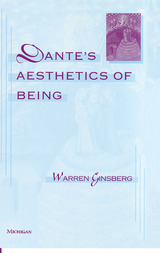
Despite the absence of tracts about beauty and art, aesthetic issues did command the attention of people in the Middle Ages. Whenever poets or philosophers turned their thoughts to the order of the heavens, whenever they delighted in music or art, they contemplated how the pleasure they took in the artistry of the universe was related to the God who created it. For Dante, aesthetics was the discourse of being and could not be narrowly defined. The aesthetic became the domain in which he considered not only form and proportion, but questions of love, identity, and perfection of the self.
Warren Ginsberg expertly guides us through Dante's work. He distinguishes between early texts such as the Vita Nuova, in which the aesthetic offers only a form of knowledge between sensation and reason, and the Comedy, in which the aesthetic is transformed into a language of existence. Among other subjects, Dante's Aesthetics of Being treats poeticism, literary history, language theory, the relation of philosophy to poetry, and of course, aesthetics. Its readers will include not only experts in Dante and medievalists in general, but literary critics of all periods. Indeed, anyone interested in poetic theory, the philosophy of beauty, or interdisciplinary studies will profit from reading Ginsberg's thoughtful offering.
Warren Ginsberg is Professor of English, University at Albany, State University of New York. He is author of The Cast of Character: The Representation of Personality in Ancient and Medieval Literature and editor of two Middle English poems, Wynnere and Wastoure and The Parlement of the Thre Ages.
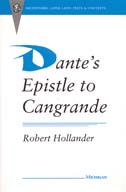
In Dante's Epistle to Cangrande Robert Hollander commandingly marshals new evidence to demonstrate that the epistle should be considered authentically Dantean. He further provides enlightening discussion of the nature of tragedy and comedy in the Divine Comedy. The author draws authoritatively on the extensive array of medieval and modern commentaries stored in electronic form by the Dartmouth Dante Project, of which he is the director.
Dante's Epistle to Cangrande makes a signal contribution to Dante studies. Naturally of interest to students of Dante's work, it will also be important reading for those concerned with literary critical questions such as authorial intent, programmatic statements, and allegorical interpretations of literature.
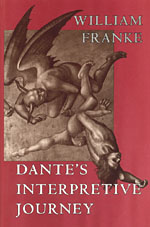
Reading the poem through the lens of hermeneutical theory, Franke focuses particularly on Dante's address to the reader as the site of a disclosure of truth. The event of the poem for its reader becomes potentially an experience of truth both human and divine. While contemporary criticism has concentrated on the historical character of Dante's poem, often insisting on it as undermining the poem's claims to transcendence, Franke argues that precisely the poem's historicity forms the ground for its mediation of a religious revelation. Dante's dramatization, on an epic scale, of the act of interpretation itself participates in the self-manifestation of the Word in poetic form.
Dante's Interpretive Journey is an indispensable addition to the field of Dante studies and offers rich insights for philosophy and theology as well.
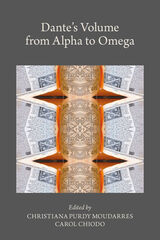
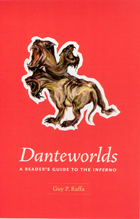
One of the greatest works of world literature, Dante Alighieri’s The Divine Comedy has, despite its enormous popularity and importance, often stymied readers with its multitudinous characters, references, and themes. But until now, students of the Inferno have lacked a suitable resource to guide their reading.
Welcome to Danteworlds, the first substantial guide to the Inferno in English. Guy P. Raffa takes readers on a geographic journey through Dante’s underworld circle by circle—from the Dark Wood down to the ninth circle of Hell—in much the same way Dante and Virgil proceed in their infernal descent. Each chapter—or “region”—of the book begins with a summary of the action, followed by detailed entries, significant verses, and useful study questions. The entries, based on a close examination of the poet’s biblical, classical, and medieval sources, help locate the characters and creatures Dante encounters and assist in decoding the poem’s vast array of references to religion, philosophy, history, politics, and other works of literature.
Written by an established Dante scholar and tested in the fire of extensive classroom experience, Danteworlds will be heralded by readers at all levels of expertise, from students and general readers to teachers and scholars.
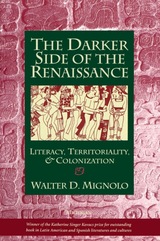

Professor Turyn has published books on Greek manuscripts in the Vatican Library, and here he examines book scripts and subscriptions from the dated Greek manuscripts in the libraries of Great Britain.
These to-scale facsimile reproductions, one hundred ninety-eight in total, provide ample paleographical material that will help in dating other manuscripts. The author presents the chronological evidence and extensively interprets the prosopographical and linguistic elements of the manuscripts. At the same time he elucidates the origins of a manuscript, its character as a document of Byzantine culture, and its role in the transmission of ancient and medieval Greek literature.
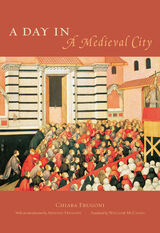
A Day in a Medieval City breathes life into the activities of the city streets, homes, fields, schools, and places of worship. With entertaining anecdotes and gritty details, it engages the modern reader with its discoveries of the religious, economic, and institutional practices of the day. From urban planning and education to child care, hygiene, and the more leisurely pursuits of games, food, books, and superstitions, Frugoni unearths the daily routines of the private and public lives of citizens. A Day in a Medieval City is a charming portal to the Middle Ages that you'll surely want with you on your travels to Europe—or in your armchair.
“Stunningly beautiful . . . and a good read as well. . . . It’s amazing how much wealth of detail and image Ms. Frugoni has packed into this delightful, relatively small book.”—Steve Goode, Washington Times
“Charming and insightful. . . .Written with exceptional grace and infused with a warm sense of humanity.”—Library Journal


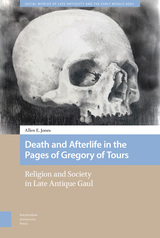
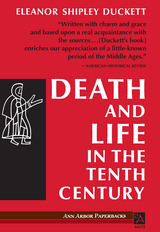
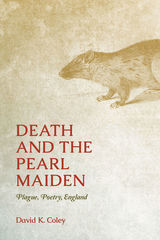
Death and the Pearl Maiden: Plague, Poetry, England asks why one of the singular historical traumas of the later Middle Ages appears to be evoked so fleetingly in fourteenth-century Middle English poetry, a body of work as daring and socially engaged as any in English literary history. By focusing on under-recognized pestilential discourses in Pearl, Cleanness, Patience, and Sir Gawain and the Green Knight—the four poems uniquely preserved British Library MS Cotton Nero A.x —this study resists the idea that the Black Death had only a slight impact on medieval English literature, and it strives to account for the understated shape of England’s literary response to the plague and our contemporary understandings of it.
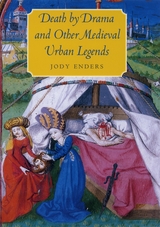
Was a convicted criminal executed on stage during a beheading scene? Was an unfortunate actor driven insane while playing a madman? Did a theatrical enactment of a crucifixion result in a real one? Did an androgynous young man seduce a priest when portraying a female saint? Enders answers these and other questions while presenting a treasure trove of tales that have long seemed true but are actually medieval urban legends. On topics ranging through politics, religion, marriage, class, and law, these tales, Enders argues, do the cultural work of all urban legends: they disclose the hopes, fears, and anxieties of their tellers. Each one represents a medieval meditation created or dramatized by the theater with its power to blur the line between fiction and reality, engaging anyone who watches, performs, or is represented by it. Each one also raises pressing questions about the medieval and modern world on the eve of the Reformation, when Europe had never engaged more anxiously and fervently in the great debate about what was real, what was pretend, and what was pretense.
Written with elegance and flair, and meticulously researched, Death by Drama and Other Medieval Urban Legends will interest scholars of medieval and Renaissance literature, history, theater, performance studies, and anyone curious about urban legends.
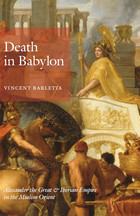
Though Alexander the Great lived more than seventeen centuries before the onset of Iberian expansion into Muslim Africa and Asia, he loomed large in the literature of late medieval and early modern Portugal and Spain. Exploring little-studied chronicles, chivalric romances, novels, travelogues, and crypto-Muslim texts, Vincent Barletta shows that the story of Alexander not only sowed the seeds of Iberian empire but foreshadowed the decline of Portuguese and Spanish influence in the centuries to come.
Death in Babylon depicts Alexander as a complex symbol of Western domination, immortality, dissolution, heroism, villainy, and death. But Barletta also shows that texts ostensibly celebrating the conqueror were haunted by failure. Examining literary and historical works in Aljamiado, Castilian, Catalan, Greek, Latin, and Portuguese, Death in Babylon develops a view of empire and modernity informed by the ethical metaphysics of French phenomenologist Emmanuel Levinas. A novel contribution to the literature of empire building, Death in Babylon provides a frame for the deep mortal anxiety that has infused and given shape to the spread of imperial Europe from its very beginning.
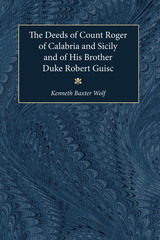
Geoffrey Malaterra's Deeds of Count Roger is the most important extant account of the Norman conquest of Muslim Silicy (1061-91). This volume includes a translation of the Latin original as well as an introduction, notes, and maps.
The Deeds of Count Roger fills a gap in the primary literature pertaining to the earliest phase of Latin Christian expansion at the expense of Islam, since the Norman conquests in Sicily were more or less contemporary with the First Crusade and the beginnings of the Spanish Reconquista. The account also illustrates the complexity of medieval historical writing, with Malaterra on the one hand praising the Normans for their military achievements and on the other subtly criticising the "lust for domination" that inspired them.
Kenneth Baxter Wolf is Professor of History at Pomona College.
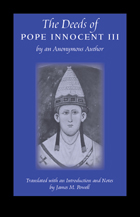
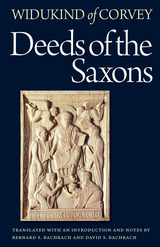
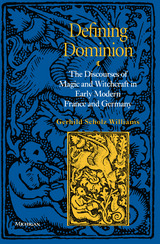
". . . Williams has done an exemplary job of analyzing the intersection of the discourses of magic (as related to women and witchcraft), discovery, and religious diversity/dissidence to explain how the confluence of these discourses eventually 'determined who occupied society's center and who was forced to move to, or remain at, its margins.' . . . Gerhild Scholz Williams is no dilettante grazing in the greener pastures of other disciplines. She has been laboring assiduously in these neighboring fields for years now, and it is breathtaking to see how all of her disparate projects have come together so elegantly articulated in this one volume." --Susan L. Cocalis, German Studies Review
Gerhild Scholz Williams is Professor of German and Comparative Literature, Washington University, St. Louis.
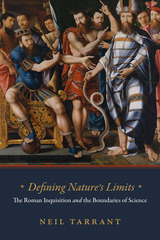
Neil Tarrant challenges conventional thinking by looking at the longer history of censorship, considering a five-hundred-year continuity of goals and methods stretching from the late eleventh century to well into the sixteenth.
Unlike earlier studies, Defining Nature’s Limits engages the history of both learned and popular magic. Tarrant explains how the church developed a program that sought to codify what was proper belief through confession, inquisition, and punishment and prosecuted what they considered superstition or heresy that stretched beyond the boundaries of religion. These efforts were continued by the Roman Inquisition, established in 1542. Although it was designed primarily to combat Protestantism, from the outset the new institution investigated both practitioners of “illicit” magic and inquiries into natural philosophy, delegitimizing certain practices and thus shaping the development of early modern science. Describing the dynamics of censorship that continued well into the post-Reformation era, Defining Nature's Limits is revisionist history that will interest scholars of the history science, the history of magic, and the history of the church alike.
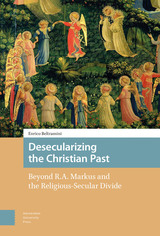
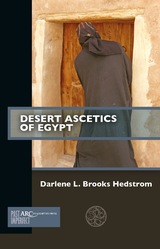
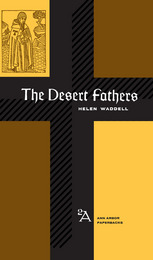
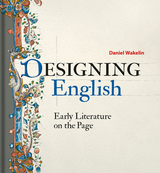
Working beyond the traditions established for Latin, scribes of English needed to be more inventive, using each book as an opportunity to redesign. Surveying eight centuries of graphic design in manuscripts and inscriptions, Designing English focuses on the craft, agency, and intentions of scribes, painters, and engravers from the Anglo-Saxon to the early Tudor periods. The book examines format, layout, and decoration, as well as bilingual manuscripts and oral recitations, weighing the balance of ingenuity and copying, imagination and practicality, behind early English book design. With over ninety illustrations, drawn especially from the holdings of the Bodleian Library, Designing English gives a comprehensive overview of English books and other material texts across the Middle Ages.
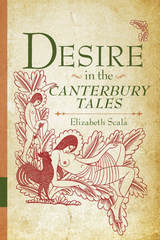
Desire in the Canterbury Tales coordinates the compulsions of desire with the act of misreading to define the driving force of Chaucer’s story collection. With Chaucer’s competitive pilgrimage as an important point of departure, this study examines the collection’s manner of generating stories out of division, difference, and contestation. It argues that Chaucer’s tales are produced as misreadings and misrecognitions of each other. Looking to the main predicate of the General Prologue’s famous opening sentence (“longen”) as well as the thematic concerns of a number of tale-tellers, and working with a theoretical model that exposes language as the product of such longing, Scala posits desire as the very subject of the Canterbury Tales and misrecognition as its productive effect. In chapters focusing on both the well-discussed tales of fragment 1 and the marriage group as well as the more recalcitrant religious stories, Desire in the Canterbury Tales offers a comprehensive means of accounting for Chaucer’s poem.
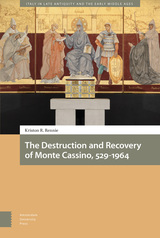
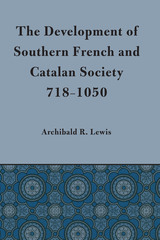
Early in the eighth century, the current of the Muslim movement that inundated northern Spain crept over the Pyrenees to spread across a portion of the French Midi. From the north the tide of Carolingian conquest forced the Muslims back and took in these same southern French and northern Spanish provinces. During the same era the Vikings raided intermittently and with varying degrees of intensity along the seacoasts and up the inland waterways, sometimes controlling considerable areas for extended periods.
These raids and conquests inevitably affected the way of life of the people of southern France and Catalonia. Contemporary travelers and later scholars have noted that the feudal traditions and obligations that were so strong in the north seemed very weak or nonexistent in the south. They found that the land seemed to be held largely as allods, not as feudal fiefs; they saw that women held positions of surprising power, that throughout the area there was great emphasis on money, and that the traditions of Roman and Visigothic law still survived.
Although scholars have noted these differences, no one has made a comprehensive study of southern French and Catalan society as a whole. It is to fill this void that Archibald Lewis provides this volume. In a detailed and scholarly study, based largely upon original records and chronicles, he examines the familial, social, economic, governmental, military, and religious life of the area from 718 to 1050 A.D.
Lewis gives as comprehensive a picture as the records will permit of the society that existed in the early eighth century, describes and discusses the major changes which took place during the next three centuries, and analyzes their causes and effects. This study, which includes careful and detailed notes and an extensive bibliography, provides a reliable and long-needed reference tool.

The Diagram as Paradigm is the first book that looks at medieval diagrams in a cross-cultural perspective, focusing on three regions—Byzantium, the Islamicate world, and the Latin West—each culturally diverse and each closely linked to the others through complex processes of intellectual, artistic, diplomatic, and mercantile exchange.
The volume unites case studies, often of little-known material, by an international set of specialists, and is prefaced by four introductory essays that provide broad overviews of diagrammatic traditions in these regions in addition to considering the theoretical dimensions of diagramming. Among the historical disciplines whose use of diagrams is explored are philosophy, theology, mysticism, music, medicine, mathematics, astronomy, and cosmology. Despite the sheer variety, ingenuity, and visual inventiveness of diagrams from the premodern world, in conception and practical use they often share many similarities, both in construction and application. Diagrams prove to be an essential part of the fabric of premodern intellectual, scientific, religious, artistic, and artisanal life.
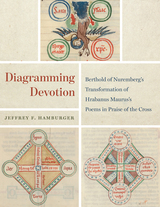

Among the epic romances of post–Barbarian Europe, such as Roland and El Cid, Digenis Akritas has been the least known in the West—outside Greece. It is the story of a half-breed prince who guarded the eastern border of the Roman Empire of Byzantium on the Euphrates in the tenth century. His name and cognomen, Basil, the Two–Blood Border Lord, sum up the curious richness of his heritage: Roman by politics, Arab and Cappadocian by birth, Greek in language, and orthodox by faith.
On an incursion into Byzantine territory, an Arab Emir captures a Christian woman. Her relatives, in raiding to rescue her, convert the Emir and his people to Christianity and bring them back to the empire. Basil is born of this union. A prodigy of valor, his miraculous strength in hunting and in battle win him an Arab bride and the loyalty of her family. He settles in a splendid garden palace by the Euphrates, pacifies the Border, fights dragons and bandits only to die young at the same instant as his wife.
The poem in English verse translation is full of humor, fairytale, and a moving religious devotion. It recaptures an urbane vanished civilization.
The translator has collated all the known texts and supports the translation with commentary, a bibliography, and a map.

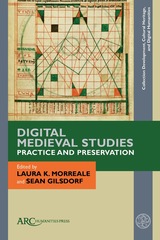

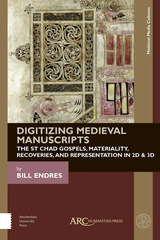
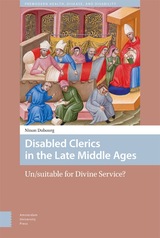
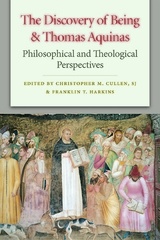
The collection of essays within The Discovery of Being and Thomas Aquinas is divided into three major parts: the first set of essays concerns the foundation of metaphysics within Thomism; the second set exemplifies the use of metaphysics in fundamental philosophical issues within Thomism; and the third set employs metaphysics in central theological issues.
The Discovery of Being and Thomas Aquinas allows major scholars of the different types of Thomism to engage in a full-scale defense of their position, as well as expanding Thomistic metaphysics to the discipline of theology in important ways.
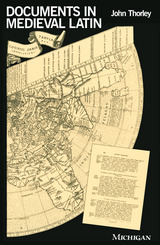
Documents in Medieval Latin will be useful to students of medieval history, literature, and philosophy and those interested in reading more about the Middle Ages. Thorley's cheerful approach, the lively and representative selections of tests, and the documentary and epigraphic focus will prove valuable for those wishing to explore these vital original sources.
John Thorley teaches medieval Latin at Lancaster University.
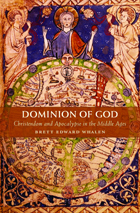
Brett Whalen explores the compelling belief that Christendom would spread to every corner of the earth before the end of time. During the High Middle Ages—an era of crusade, mission, and European expansion—the Western followers of Rome imagined the future conversion of Jews, Muslims, pagans, and Eastern Christians into one fold of God’s people, assembled under the authority of the Roman Church.
Starting with the eleventh-century papal reform, Whalen shows how theological readings of history, prophecies, and apocalyptic scenarios enabled medieval churchmen to project the authority of Rome over the world. Looking to Byzantium, the Islamic world, and beyond, Western Christians claimed their special place in the divine plan for salvation, whether they were battling for Jerusalem or preaching to unbelievers. For those who knew how to read the signs, history pointed toward the triumph and spread of Roman Christianity.
Yet this dream of Christendom raised troublesome questions about the problem of sin within the body of the faithful. By the late thirteenth and fourteenth centuries, radical apocalyptic thinkers numbered among the papacy’s most outspoken critics, who associated present-day ecclesiastical institutions with the evil of Antichrist—a subversive reading of the future. For such critics, the conversion of the world would happen only after the purgation of the Roman Church and a time of suffering for the true followers of God.
This engaging and beautifully written book offers an important window onto Western religious views in the past that continue to haunt modern times.
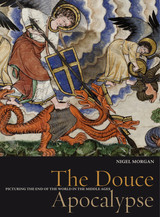
Now the manuscript—created sometime between 1250 and 1275—reaches an entirely new audience at the hands of noted scholar Nigel Morgan. The Douce Apocalypse explores the manuscript’s royal patronage, looks at its fascinating imagery, and examines its significance in light of contemporary prophecy. The commentary is accompanied by lush, full-color illustrations.
As Morgan relates, the Douce Apocalypse is especially enlightening because of its unfinished nature. A few of its images remain incomplete—and such absences give insight into the artist’s painstaking techniques of drawing, gilding, and painting. The second volume in the Treasures from the Bodleian Library series, The Douce Apocalypse will convey both the beauty of the original and the enduring fascination of its contents.








The annual journal Dumbarton Oaks Papers was founded in 1941 for the publication of articles relating to late antique, early medieval, and Byzantine civilization in the fields of art and architecture, history, archeology, literature, theology, law, and the auxiliary disciplines. Numerous maps, tables, illustrations, and color plates provide supplementary information for many of the articles.
In this issue: Kathleen Corrigan, “The Witness of John the Baptist on an Early Byzantine Icon in Kiev”; Ann Terry, “The Sculpture at the Cathedral of Eufrasius in Poreč”; Natalia Teteriatnikov, “Upper-Story Chapels near the Sanctuary in Churches of the Christian East”; Mark J. Johnson, “Toward a History of Theoderic’s Building Program”; Paul Magdalino, “The Bath of Leo the Wise and the ‘Macedonian Renaissance’ Revisited: Topography, Iconography, Ceremonial, Ideology”; Robert W. Edwards, “The Vale of Kola: A Final Preliminary Report on the Marchlands of Northeast Turkey”; Joseph D. C. Frendo, “History and Panegyric in the Age of Heraclius: The Literary Background to the Composition of the Histories of Theophylact Simocatta”; John Meyendorff, “Mount Athos in the Fourteenth Century: Spiritual and Intellectual Legacy”; Nicolas Oikonomides, “Mount Athos: Levels of Literacy”; and Robert F. Taft, S.J., “Mount Athos: A Late Chapter in the History of the Byzantine Rite.”













Dumbarton Oaks Papers is an annual journal of scholarly articles on Byzantine topics. Many of the articles are based upon presentations made at the Byzantine conferences hosted by Dumbarton Oaks. Numerous maps, tables, illustrations, and color plates provide supplementary information.
Dumbarton Oaks Papers 59 includes papers from a colloquium on Byzantine glass, guest edited by David Whitehouse of the Corning Museum of Glass. Other articles feature a discussion of zodiac cycles in ancient Palestinian synagogues, a study of early Christians' responses to the spectacles of fifth-century Carthage, and an analysis of scientific and literary sources pertaining to the mysterious cloud that darkened the sky for about a year in 536, to determine what, if any, immediate effects it had. A fieldwork report on the ongoing excavations at the Amorium project is also featured.

Volume 60 of this annual journal explores a range of Byzantine subjects: the classification of stamping objects (including six previously unpublished metal stamps); the date and purpose of the construction of Constantinople’s church of Saints Sergius and Bacchus; the Coptic Church’s literary construction of its identity in post-conquest Egypt; the evidence for the tenth-century revision of the so-called Chronicle of 811; an unusual development in the iconography of St. Menas; and versions of Niketas Choniates’ History.
Also included are editions and translations of Byzantine Communion prayers newly discovered in Massachusetts and two funerary epigrams written by Manuel Philes; both articles include commentary. The volume concludes with reports from 2003 and 2004 on Dumbarton Oaks–supported archaeological fieldwork projects on a church in Bizye and an aristocratic rock-cut Byzantine settlement in Cappadocia.

This latest volume of Dumbarton Oaks Papers focuses in part on literary and historical texts: historicism in Byzantine thought and literature; the Chronicle of Matthew of Edessa, encompassing the First Crusade and the Armenian diaspora; and a reappraisal of the satirical prose work Mazaris’s Journey to Hades. The history and architecture of the Cypriot Monastery of Saint John Chrysostomos at Koutsovendis occupy a lengthy and informative chapter, which also includes a first edition of the “Letter of Nikon of the Black Mountain to the Founder George.”
The volume also contains selected papers from the 2005 Dumbarton Oaks symposium on the archaeological evidence for settlement patterns in Anatolia and the Levant between 500 and 1000.

This volume begins with a substantial investigation of the murder of several members of the imperial family during the summer of 337, following the death of Constantine. Two other major articles are devoted to well-known Byzantine illustrated manuscripts, the ninth-century Sacra Parallela and the fourteenth-century collection of theological works by the emperor John VI Kantakouzenos, both now in Paris. A third art-historical paper presents a detailed analysis of the architectural decoration of the church of the “Red Monastery” near Suhag in Egypt. Other studies treat the mystery of the Incarnation as well as the earliest version of the Life of the Virgin and its relationship with the cult of Marian relics in Constantinople.
The volume concludes with three papers from a colloquium on the hymnographer Romanos the Melode.

Founded in 1941, the annual journal Dumbarton Oaks Papers is dedicated to the publication of articles relating to late antique, early medieval, and Byzantine civilization in the fields of art and architecture, history, archaeology, literature, theology, law, and auxiliary disciplines.
In this issue: Alexander Sarantis, “War and Diplomacy in Pannonia and the Northwest Balkans during the Reign of Justinian: The Gepid Threat and Imperial Responses”; Peter Hatlie, “Images of Motherhood and Self in Byzantine Literature”; Maria Evangelatou, “Liturgy and the Illustration of the Ninth-Century Marginal Psalters”; Henry Maguire, “Ivories as Pilgrimage Art: A New Frame for the ‘Frame Group’”; Vasileios Marinis, “Tombs and Burials in the Monastery tou Libos in Constantinople”; and three fieldwork reports: “Second Report on the Excavation in the Monastery of Apa Shenute (Dayr Anba Shinuda) at Suhag,” by Peter Grossman, Darlene L. Brooks Hedstrom, and Saad Mohamad Mohamad Osman, with a contribution by Hans-Christoph Noeske; “To Live and Die in a Turbulent Era: Bioarchaeological Analysis of the Early Byzantine (6th–7th Centuries AD) Population from Sourtara Galaniou Kozanis (Northern Greece),” by Chryssi Bourbou; and “Study and Restoration of the Zeyrek Camii in Istanbul: Second Report, 2001–2005,” by Robert Ousterhout, Zeynep Ahunbay, and Metin Ahunbay.


Founded in 1941, the annual journal Dumbarton Oaks Papers is dedicated to the publication of articles relating to late antique, early medieval, and Byzantine civilization in the fields of art and architecture, history, archaeology, literature, theology, law, and auxiliary disciplines.
This issue includes “The Canon Tables of the Psalms: An Unknown Work of Eusebius of Caesarea” by Martin Wallraff; “Histoires ‘Gothiques’ à Byzance: Le Saint, Le Soldat, et Le Miracle d’Euphémie et du Goth (BHG 739)” by Charis Messis and Stratis Papaioannou; “Reassessing the Sarcophagi of Ravenna” by Edward M. Schoolman; “Sources for the Study of Liturgy in Post-Byzantine Jerusalem (638–1187 CE)” by Daniel Galadza; “(Re)Mapping Medieval Antioch: Urban Transformations from the Early Islamic to the Middle Byzantine Periods” by A. Asa Eger; “Melkites and Icon Worship during the Iconoclastic Period” by Juan Signes Codoñer; “The Anzas Family: Members of the Byzantine Civil Establishment in the Eleventh, Twelfth, and Thirteenth Centuries” by John Nesbitt and Werner Seibt; “Viewing and Description in Hysmine and Hysminias: The Fresco of the Virtues” by Paroma Chatterjee; “The Documents of Dominicus Grimani, Notary in Candia (1356–1357)” by Nicky Tsougarakis; and “The Church of Saints Sergius and Bacchus in Kaftūn (Northern Lebanon) and Its Wall Paintings” by Tomasz Waliszewski, Krzysztof Chmielewski, Mat Immerzeel, and Nada Hélou.





Published annually, the journal Dumbarton Oaks Papers was founded in 1941 for the publication of articles relating to Byzantine civilization.
In this issue: John S. Langdon and Stephen W. Reinert, “Speros Vryonis Jr.: 1928–2019”; Abraham Terian, “Monastic Turmoil in Sixth-Century Jerusalem and the South Caucasus: The Letter of Patriarch John IV to Catholicos Abas of the Caucasian Albanians”; Coleman Connelly, “Continued Celebration of the Kalends of January in the Medieval Islamic East”; Victoria Gerhold, “The Legend of Euphratas: Some Notes on Its Origins, Development, and Significance”; Christos Simelidis, “Two Lives of the Virgin: John Geometres, Euthymios the Athonite, and Maximos the Confessor”; Georgios Makris, “Living in Turbulent Times: Monasteries, Settlements, and Laypeople in Late Byzantine Southwest Thrace”; Philipp Niewöhner, “The Significance of the Cross before, during, and after Iconoclasm: Early Christian Aniconism in Constantinople and Asia Minor”; Stefania Gerevini, “Art as Politics in the Baptistery and Chapel of Sant’Isidoro at San Marco, Venice”; Laura Pfuntner, “Between Science and Superstition: Photius, Diodorus Siculus, and ‘Hermaphrodites’”; Baukje van den Berg, “John Tzetzes as Didactic Poet and Learned Grammarian”; Matthew Kinloch, “In the Name of the Father, the Husband, or Some Other Man: The Subordination of Female Characters in Byzantine Historiography”; Levente László, “Rhetorius, Zeno’s Astrologer, and a Sixth-Century Astrological Compendium”; and Stig Simeon R. Frøyshov, “The Early History of the Hagiopolitan Daily Office in Constantinople: New Perspectives on the Formative Period of the Byzantine Rite.”

Published annually, the journal Dumbarton Oaks Papers was founded in 1941 for the publication of articles relating to Byzantine civilization.
In this issue: Margaret Mullet, “Ruth Juliana Macrides: 1949–2019”; Sihong Lin, “Justin under Justinian: The Rise of Emperor Justin II Revisited”; David Gyllenhaal, “Byzantine Melitene and the Social Milieu of the Syriac Renaissance”; Pavel Murdzhev, “The Introduction of the Moldboard Plow to Byzantine Thrace in the Eleventh Century”; Annemarie Weyl Carr, “The Lady and the Juggler: Mary East and West”; Robert S. Nelson, “A Miniature Mosaic Icon of St. Demetrios in Byzantium and the Renaissance”; Esra Akin-Kivanç, “In the Mirror of the Other: Imprints of Muslim–Christian Encounters in the Late Antique and Early Medieval Mediterranean”; Anna Chrysostomides, “John of Damascus’s Theology of Icons in the Context of Eighth-Century Palestinian Iconoclasm”; Max Ritter, “The Byzantine Afterlife of Procopius’s Buildings”; Jonathan L. Zecher, “Myths of Aerial Tollhouses and Their Tradition from George the Monk to the Life of Basil the Younger”; Nektarios Zarras, “Illness and Healing: Τhe Ministry Cycle in the Chora Monastery and the Literary Oeuvre of Theodore Metochites”; and Aleksandr Andreev, “The Order of the Hours in the Yaroslavl Horologion.”

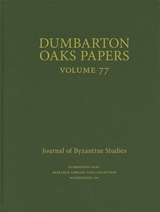
READERS
Browse our collection.
PUBLISHERS
See BiblioVault's publisher services.
STUDENT SERVICES
Files for college accessibility offices.
UChicago Accessibility Resources
home | accessibility | search | about | contact us
BiblioVault ® 2001 - 2024
The University of Chicago Press





